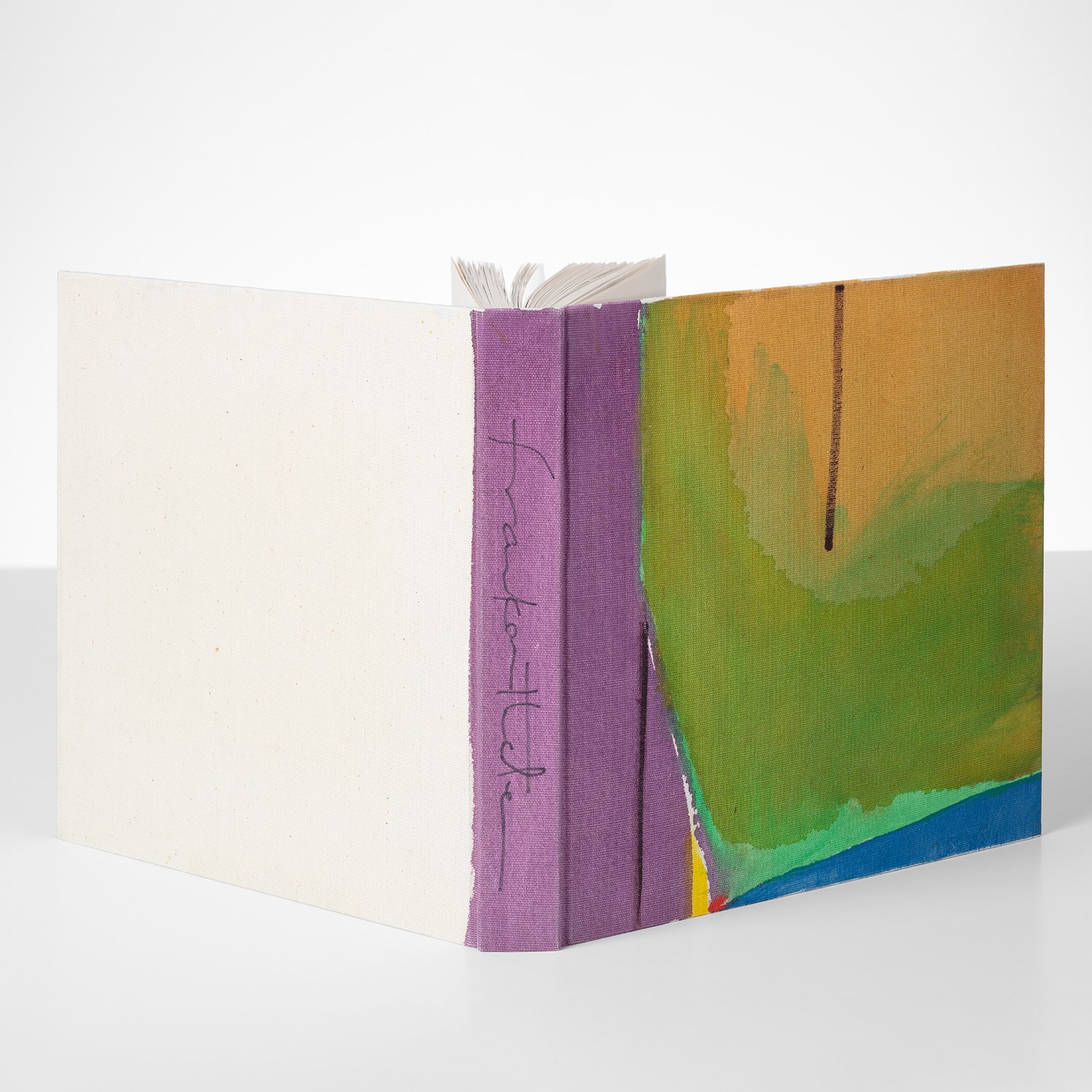





Property from the Collection of Rosa and Aaron Esman
57
Helen Frankenthaler
Painted Book Cover
1971
Acrylic in colors, on canvas bound monograph of the artist, with text by Barbara Rose, designed by Robert Motherwell.
11 x 11 3/4 x 1 1/2 in. (27.9 x 29.8 x 3.8 cm)
Signed in black ink on the spine of the book, additionally signed and numbered '23' in black ink on the title page (from a series of 62 unique paintings), published by Harry N. Abrams, Inc., New York, framed.